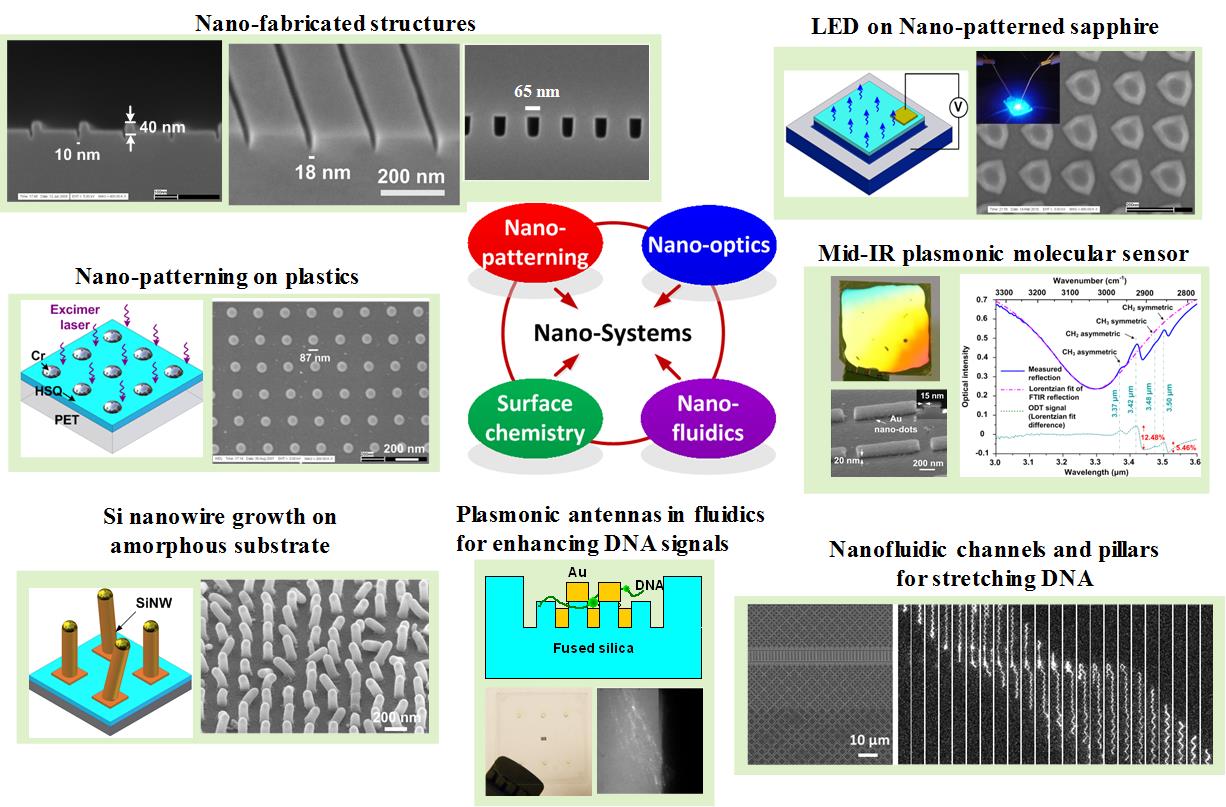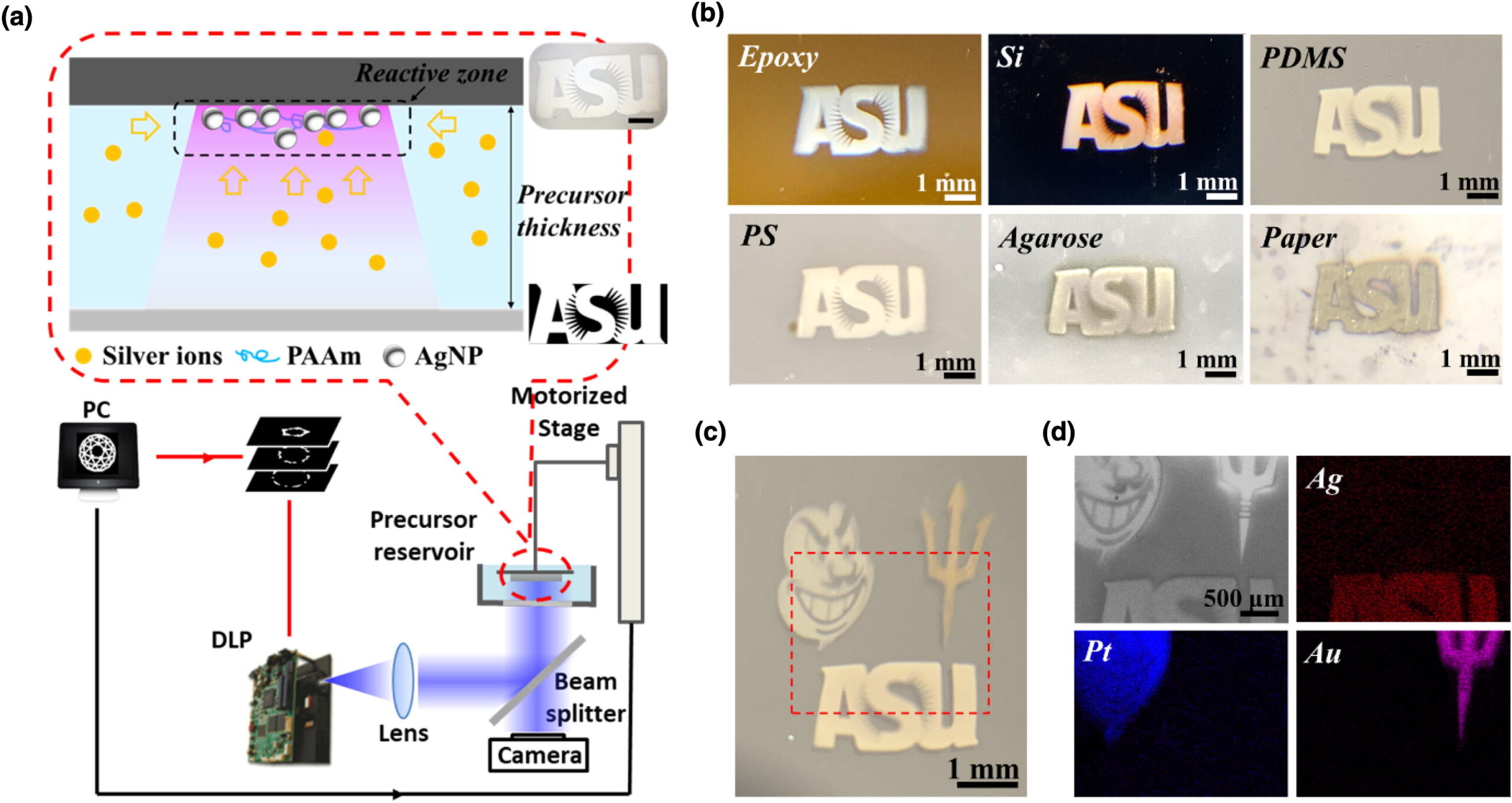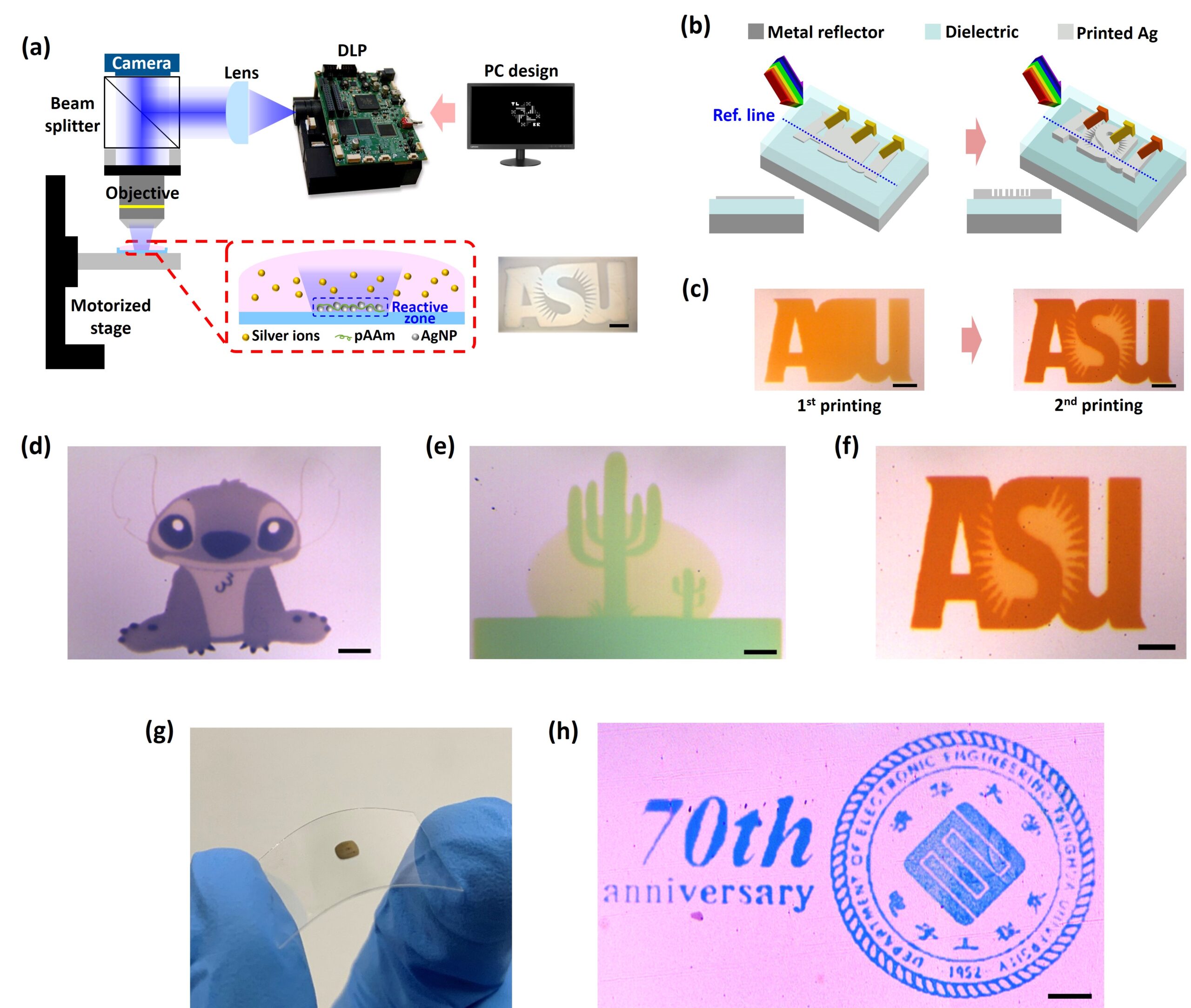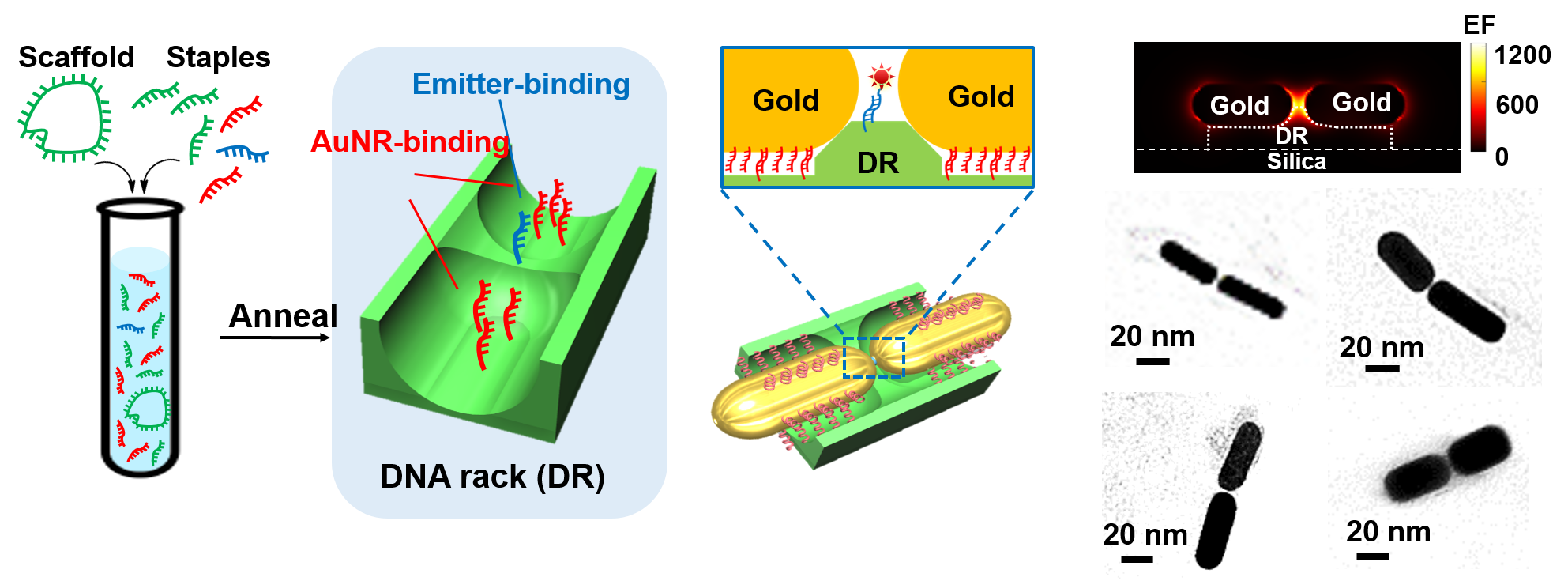Advanced manufacturing technology development
Our lab aims to creating future manufacturing processes converging materials, processes, systems, and designs by systematically integrating the manufacturing strategy towards unique applications. Focusing on micrometer- and nanometer-scale manufacturing, I have built up a 1,500-sqft lab space with photolithography, nanoimprint lithography (NIL) and additive manufacturing capabilities that actively support a wide range of ongoing research activities, including nanophotonics and sensing.

Additive manufacturing of metallic structures
Different from other additive manufacturing technologies at macro-scale, one focus of my lab is to 3D print micro-/nano-structured metal and composite towards electronic, photonic and biosensing applications. Many mainstream metal printing techniques rely on thermal or laser-induced fusion of nozzle-deposited metal particles. However, high-temperature processes can complicate their use on soft or organic materials in flexible electronics, soft robotics and bio-sensors. Here, my lab seeks to establish room-temperature, solution-based, photochemical methods that programs metal deposition by UV-light controlled reduction of silver, gold, and platinum ions. Uniquely, we introduced a ligand-rich polymer (polyallylamine) to tether reduced metal nanoparticles (MNPs) into continuous films at nanometer thickness yet smoother than vacuum-deposited films. In one direction, we have realized microstructure color printing by creating multilayered optical cavities. We are currently exploring the fundamental mechanisms limiting the structural resolution, yield, and material performance (e.g. electrical resistivity and optical refractive index) of printed metals. In the next few years, our research will be expanded into the creation of metamaterials of tunable refractive indexes by integrative printing from a variety of metals (silver, gold, platinum, etc.) and polymer precursors. Further, we will study printing of semiconductor-compatible materials, such as copper for interconnects. We will also investigate the feasibility of incorporating dielectric nanoparticles and quantum dots into the precursors to create multi-functional films. The metal printing technology may also combine with NIL for large-scale, high-resolution and low-cost production of nanophotonic structures.
Further read:
- Zhi Zhao *, Jing Bai, Yu Yao, and Chao Wang*, “Printing Continuous Metal Structures via Polymer-Assisted Photochemical Deposition,” Materials Today, 37, pp. 10-17, 2020.
- Shinhyuk Choi, Zhi Zhao, Jiawei Zuo, Hossain Mansur Resalat Faruque, Yu Yao, and Chao Wang*, “Structural color printing via polymer-assisted photochemical deposition,” Light: Science & Application, vol. 11, pp. 84, 2022.


DNA self assembly
In this direction, our group, in collaboration with Dr. Yan Liu, is using programmed DNA origami (DO) and single stranded DNA linkers to deterministically assemble anisotropic metallic nanoparticles (MNPs) and emitters with precisely determined geometries and locations, forming plasmonic metamaterial with critical dimensions down to single-digit nanometer scale and achieving strong electromagnetic field interaction with a single emitter at the cavities. We aim to study the fundamental emitter-cavity interactions at nanometer scale assisted by biomolecular assembly, which is a part of the PI’s long-term career goal to bridge quantum optics with biotechnology. Specifically, we will innovative three-dimensional DO designs to assemble anisotropic nanoparticle dimer cavities. Further, we will attach single QD and organic dye emitters to each DO template and the MNP cavity in a deterministic strategy, and use the DO assembled system as a metamaterial platform to experimentally quantify the emission decay rates, Purcell factor, coupling strength, Rabi vacuum energy splitting, and quantum auto-correlation measurements.
Further read:
- Zhi Zhao, Xiahui Chen, Jiawei Zuo, Ali Basiri, Shinhyuk Choi, Yu Yao, Yan Liu *, and Chao Wang *, “Deterministic Assembly of Single Emitters in Sub-5 Nanometer Optical Cavity Formed by Gold Nanorod Dimers on Three-Dimensional DNA Origami “, Nano Research, v 15, pp. 1327–1337, 2022, arXiv:2104.02916.


